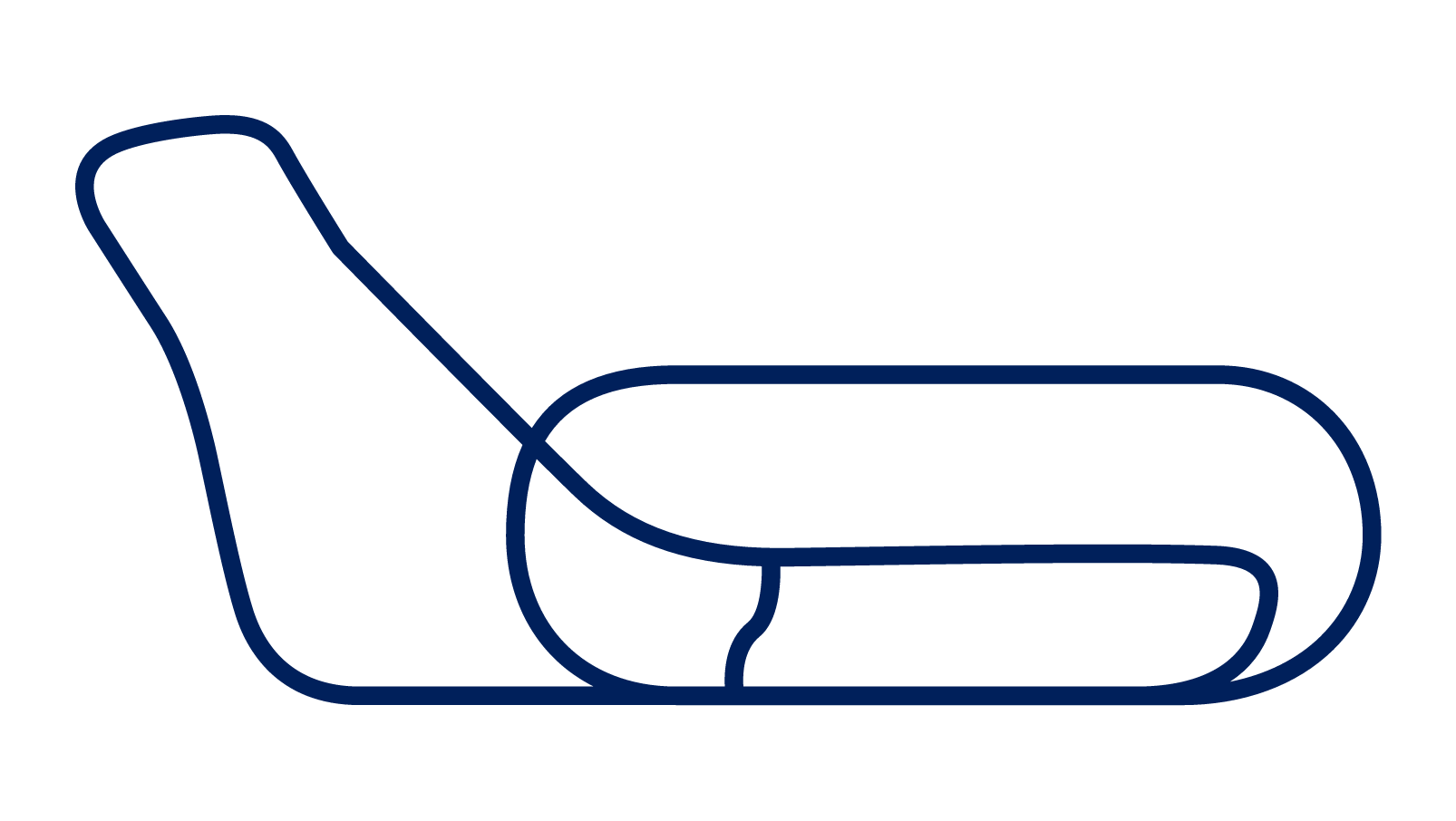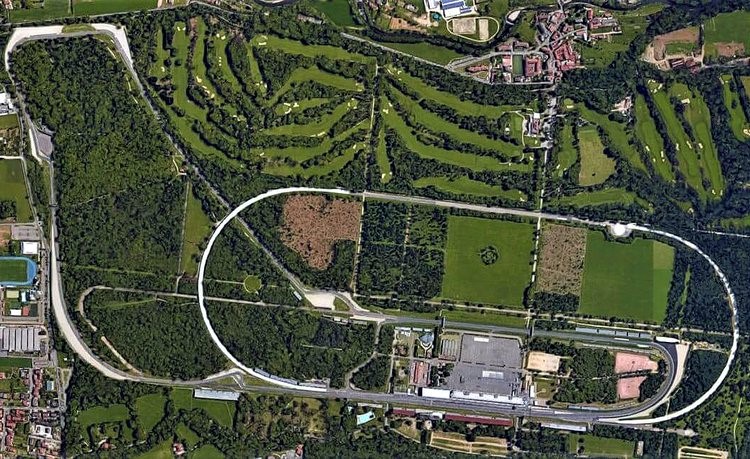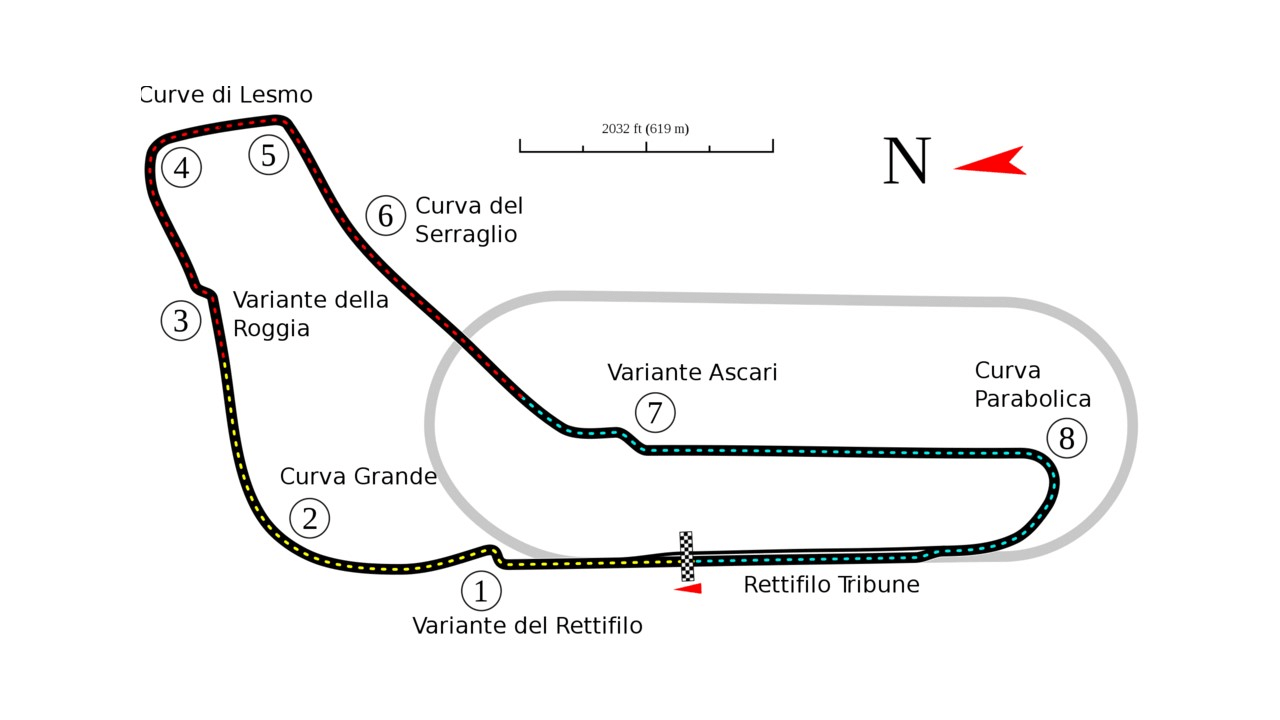
The Autodromo Nazionale Monza is universally known as the Temple of Speed. It was built in 1922, third in the world after Brooklands and Indianapolis. The circuit's biggest event is the Italian Grand Prix, hosted there since 1949 in the first weekend of September. There are other important race event during the year: -April: Italian GT Championship, TCR Italian Series, Formula Regional European Championship. -May: classic cars championship. -July: FIA World Endurance Championship 6 Hours of Monza, European Le Mans Series 4 Hours of Monza, Le Mans Cup. September: FIA Formula 3 Championship, Porsche Supercup, International GT Open, Euroformula Open Championship, TCR Europe Series. October: Italian GT Championship, Italian F4 Championship, ACCR Formula 4 Championship. In 2020 and 2021 Monza hosted the World Rally Championship final round, ACI Rally Monza. The site has three tracks – the 5.793 km (3.600 mi) Grand Prix track in use nowadays and other two not used, the 2.405 km (1.494 mi) Junior track and a 4.250 km (2.641 mi) high speed oval track with steep bankings. Monza circuit is known for its high-speed, simplistic design and is currently the fastest track on the Formula One calendar. Formula 1 engines are at full throttle for nearly 80% of the lap and engine failures are common.
The circuit is generally flat but has a gradual gradient from the second Lesmos to the Variante Ascari. Due to the low aerodynamic profile needed, with its resulting low downforce, the grip is very low; understeer is a more serious issue than at other circuits; however, the opposite effect, oversteer, is also present in the second sector, requiring the use of a very distinctive opposite lock technique.

Formula One cars are set up with one of the smallest wing angles on the F1 calendar to ensure the lowest level of drag on the straights. There are only 6 corner complexes at Monza: the first two chicanes, the two Lesmos, the Ascari complex and the Parabolica, a total of 11 corners. Cars approach the first corner at 340 km/h (210 mph) in eighth gear, and brake at about 120 m (130 yd) before the first chicane—the Variante del Rettifilo—entering at 86 km/h (53 mph) in second gear and exiting at 74 km/h (46 mph). Conservation of speed through the first chicane is made possible by driving the straightest line, as a small mistake here can result in a lot of time being lost through the Curva Grande down to the Variante della Roggia chicane in eighth gear, at 330 km/h (210 mph). This chicane is probably the best overtaking chance on the lap, as it is the only one with the "slow corner, long straight, slow corner"; one of the characteristics of modern circuits. The Curve di Lesmo are two corners that are not as fast as they used to be but are still challenging ones. The first is blind, entered at 264 km/h (164 mph) in sixth gear, while the second is a seventh gear entry at 260 km/h (160 mph). The downhill straight down to Variante Ascari is very bumpy under the bridge. The final challenge is the Curva Parabolica: approaching at 335 km/h (208 mph) in eighth gear, cars exit in sixth gear at 285 km/h (177 mph), accelerating onto the main start/finish straight.
Top speeds throughout the engine eras: 372 km/h (231 mph) during the mid-2000s V10 engine formula, 340 km/h (210 mph) in 2012 with the 2.4L V8 engines and up to 360 km/h (220 mph) since the 2014 1.6L turbocharged hybrid V6 engine. - Maximum speed achieved: Montoya had 372,6 km/h top speed at Monza test in 2005 - Maximum g-force: 4.50G during deceleration. - Fastest Lap: Lewis Hamilton recorded the fastest pole position lap at Monza in 2020, when he lapped in 1:18.887 at an average speed of 264.362 km/h (164.267 mph) on the W11 EQ Performance — the fastest average lap speed recorded in qualifying for a World Championship event.

Source:
https://en.wikipedia.org/wiki/Monza_Circuit
https://www.monzanet.it/en/history/
edited by arrabbiata